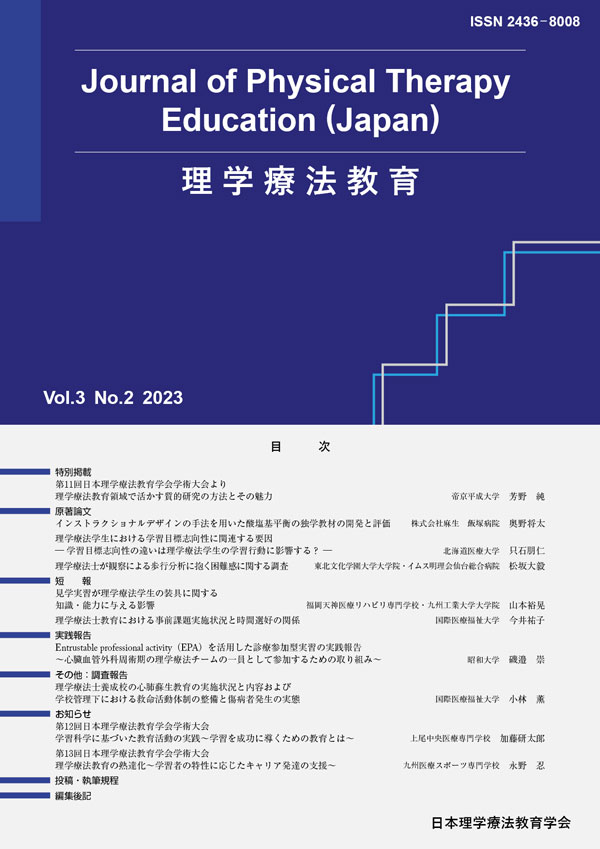Volume 3, Issue 2
Displaying 1-10 of 10 articles from this issue
- |<
- <
- 1
- >
- >|
-
2023Volume 3Issue 2 Pages 2_1-2_5
Published: October 31, 2023
Released on J-STAGE: November 28, 2023
Download PDF (1515K)
-
2023Volume 3Issue 2 Pages 2_6-2_13
Published: October 31, 2023
Released on J-STAGE: November 28, 2023
Download PDF (1088K) -
2023Volume 3Issue 2 Pages 2_14-2_22
Published: October 31, 2023
Released on J-STAGE: November 28, 2023
Download PDF (838K) -
2023Volume 3Issue 2 Pages 2_23-2_33
Published: October 31, 2023
Released on J-STAGE: November 28, 2023
Download PDF (1046K)
-
2023Volume 3Issue 2 Pages 2_34-2_39
Published: October 31, 2023
Released on J-STAGE: November 28, 2023
Download PDF (757K) -
2023Volume 3Issue 2 Pages 2_40-2_44
Published: October 31, 2023
Released on J-STAGE: November 28, 2023
Download PDF (819K)
-
2023Volume 3Issue 2 Pages 2_45-2_51
Published: October 31, 2023
Released on J-STAGE: November 28, 2023
Download PDF (1149K)
-
2023Volume 3Issue 2 Pages 2_52-2_61
Published: October 31, 2023
Released on J-STAGE: November 28, 2023
Download PDF (953K)
-
2023Volume 3Issue 2 Pages 2_62-
Published: October 31, 2023
Released on J-STAGE: November 28, 2023
Download PDF (579K) -
2023Volume 3Issue 2 Pages 2_63-
Published: October 31, 2023
Released on J-STAGE: November 28, 2023
Download PDF (552K)
- |<
- <
- 1
- >
- >|
